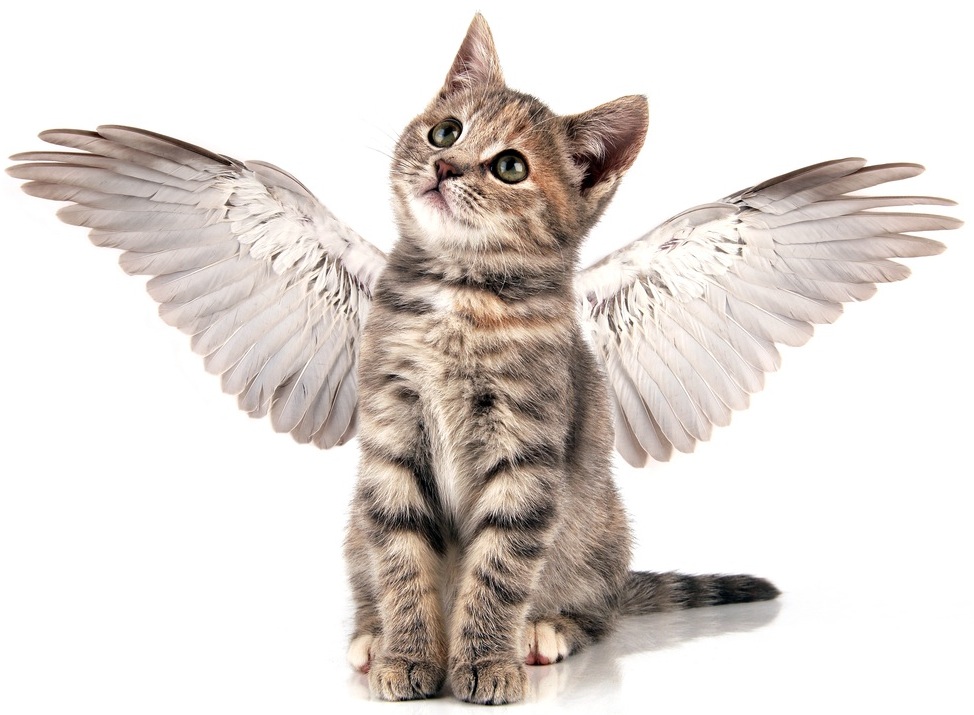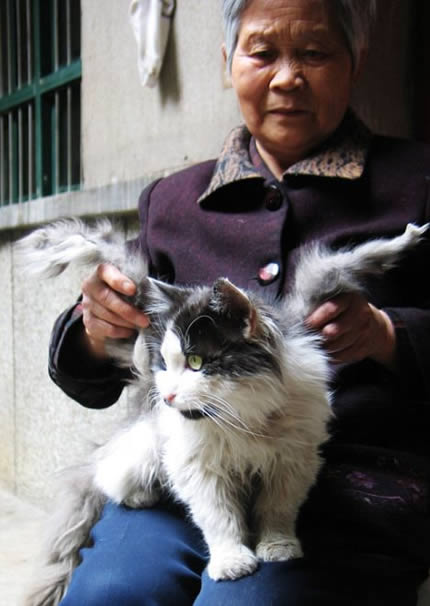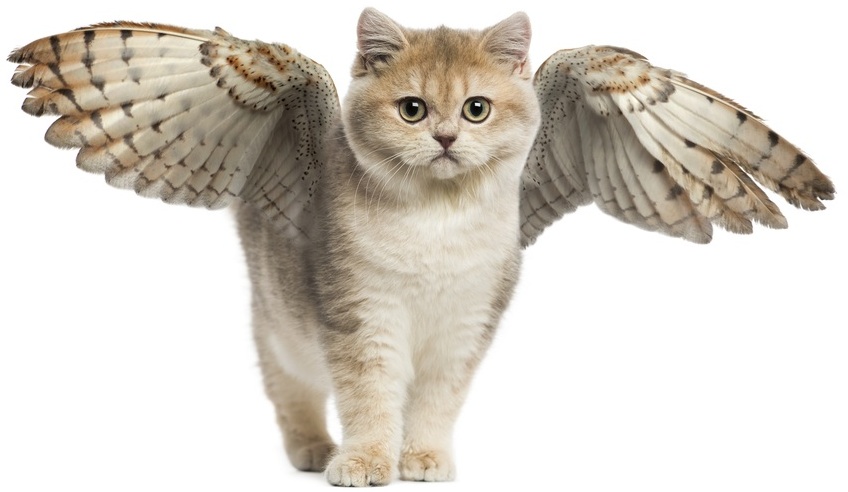The Mysterious World of Winged Cats

Just what would the future hold if cats could fly? There would certainly be no more need for the fire services to bring down stranded cats from trees! Amazing as it may seem, there are reliable records and photographs of a number of cats which have what can only be described as wings, outside the realm of fantasy. One such moggy was actually exhibited at the now-defunct Oxford Zoo in England during the 1930s.
This black and white cat was first spotted in the Summerstown area of the city by a number of people, before being trapped in a stable. Those who saw the cat described how it could apparently flap its wings to gain height, when jumping, although it could not fly properly. There is still a faded monochrome photograph of this particular cat.
Various other photographs also exist showing cats with wings, with probably the earliest illustration of this type being featured in the November 1899 issue of The Strand Magazine. This cat had been the pet of a lady in Wiveliscombe, Somerset.
Another similar cat, kept in the Attercliffe area of Sheffield, was photographed showing its 60cm (2ft) wingspan in 1939. Its owner, Mrs. Roebuck explained how her pet held his wings out when he jumped, which helped to carry him forward. She reportedly sold him to a so-called Museum of Freaks, based at the popular seaside town of Blackpool.
A worldwide phenomenon

Such cats are still reported occasionally. One recent example (see photo) was photographed in China by Huashang News. This particular black and white cat was a tom, resident in the city of Xianyang in Shaanxi province. His owner told the newspaper in May 2007 that the wings developed from small swellings over the course of a month, when he was being harassed by female cats keen to mate.
Winged cats do not normally fly, although many residents in the town of Alfred, Ontario in Canada apparently witnessed strange events involving one such cat which was terrifying people in the region during 1966.
Two other winged cats had reputedly been shot earlier, in the vicinity of Montreal and Ottawa, and this individual met a similar end on 24th June of that year. It was killed as it started to attack an ordinary cat, gliding distances which witnesses reckoned were about 15m (50ft) with its wings extended.
Its body was then buried in a garden, before being exhumed several days later and taken to the Kemptville Agricultural School. The subsequent examination carried out in the veterinary laboratory revealed that its wingspan was just 35cm (14in), and that its wings were simply long tufts of matted fur growing out of the back, with no bony support.
Another remarkable case, involving a cat which supposedly flew, had been recorded from Sweden in 1949. The wings in this instance measured a truly remarkable 61cm (2ft) in length, which ranks as a record. This particular individual also met a sad end, being shot with its body then being donated to a museum.
In fact, there is almost no evidence to show that such cats have wings formed over a bony skeleton, and this therefore casts serious doubts over their ability to fly. Their unusual appearance results instead from a development abnormality which causes an outgrowth of fur. This lack of bony support causes the supposed wings to vibrate as the cat runs, suggesting that they are flapping. Out of more than 30 documented cases of winged cats reported worldwide however, only one has definitely had wings supported by bone.
The case of Thomas

One of the most famous of all winged cats was a female called Thomas. During 1959, she appeared on the Today television programme, broadcast across the USA. She was described as having gristly wings, which felt gritty where they attached to her body. Thomas drew huge crowds to the small town of Pineville, in West Virginia where she was found, and ended up becoming the victim of a bizarre law suit.
A local woman contented that Thomas was actually her cat, called Mitzi. When in October that year, the cat was taken to court to be examined, it turned out that she had lost her wings, with two large mats of fur lying in the box. The judge decided to award custody of the cat to the teenager called Douglas Shelton who had found her, and ordered the claimant Mrs. Hicks to be paid a dollar in damages.
The loss of wings in this fashion is not uncommon. Back in 1842, the American writer Henry David Thoreau described a cat which shed its so-called wings every spring. These typically grew to about 30cm (12in) in length, and approximately 5cm (2in) wide.
A veterinary explanation
During the 1970s, veterinary researchers confirmed the existence of a condition known as Feline Cutaneous Asthenia (FCA), which causes the skin to be weak. It stretches very readily and is fragile, tearing very easily as a result.
Significantly, the skin of cats afflicted by FCA frequently grows in folds over the shoulders and back. Such skin flaps can break off easily, explaining how cats can apparently lose their evident wings after being handled or confined, as happened with Thomas. At least some winged cats are therefore likely to be FCA sufferers.
Where the skin itself is damaged, so tears have to be repaired by non-invasive techniques such as the use of skin glue, rather than sutures. It is particularly important to treat cats suffering from FCA with a preventive product, so they do not suffer from parasites such as fleas or mites. Otherwise, the resulting irritation can cause them to injure themselves by scratching their skin. They are also very vulnerable to harm if they become involved in fights, so that toms especially must be neutered. This also reduces the risk of this genetic illness, which may cause joint problems as well, from being passed on through the bloodline.
Conditions equivalent to FCA have been reported in a range of other species.These include dogs, horses and farm animals, while people suffering from the human version of this afflication, often referred to as the Ehlers-Danlos Syndrome (EDS), display similar symptoms, including an abnormally elastic and stretchable skin.